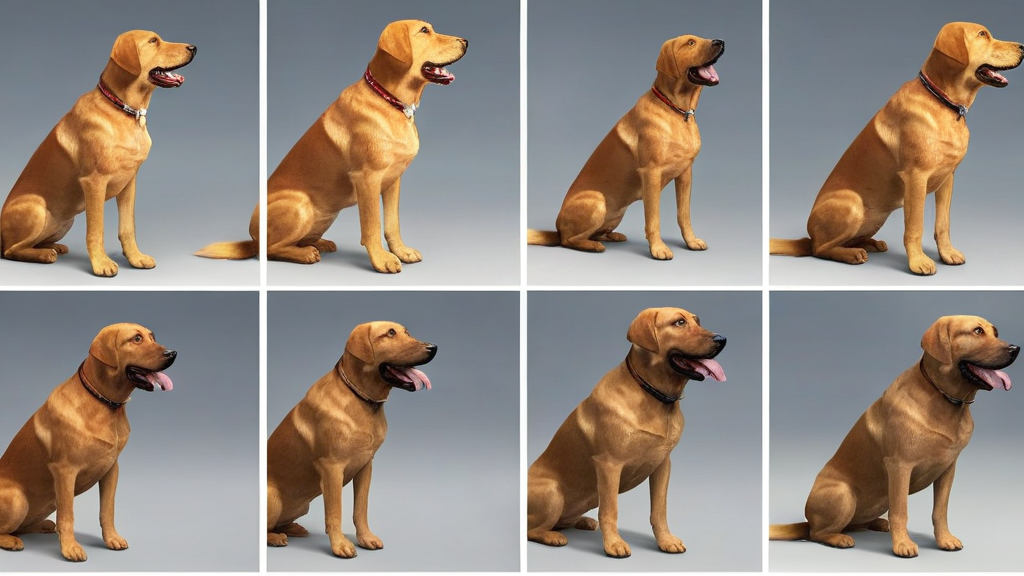Essential Dog Training Commands Every Owner Should Know
Training your dog requires patience, consistency, and knowledge of fundamental commands that establish communication and control. By mastering these essential techniques, you’ll create a stronger bond with your furry companion and ensure their safety in various environments.
Foundational Commands for Effective Communication
Learning core dog training commands isn’t just about obedience; it’s about creating a language between you and your pet. Each command serves a specific purpose in managing your dog’s behavior and keeping them safe.
Sit: The Starting Point of Dog Training
The “sit” command is typically the first skill most dog owners teach. This basic instruction helps control your dog’s impulses and provides a reliable way to manage their behavior in different situations. When your dog sits, they demonstrate focus and readiness to listen to further instructions.
Stay: Crucial for Safety and Control
Teaching your dog to “stay” can prevent dangerous scenarios like running into traffic or approaching unfriendly animals. This command requires patience and gradual training, starting with short durations and slowly increasing the time and distance.
Come: The Recall Command
A reliable recall command can be a lifesaver. When your dog understands and consistently responds to “come”, you can quickly retrieve them from potentially risky situations. This command is especially important in outdoor environments where distractions are abundant.
Advanced Behavioral Management Commands
Beyond basic instructions, some commands help manage more complex behavioral challenges and enhance your dog’s overall discipline.
Leave It: Preventing Unwanted Interactions
The “leave it” command protects your dog from potentially harmful objects or substances. Whether it’s a dangerous item on the ground or something toxic, this command can prevent serious health risks and demonstrate your role as a protective leader.
Drop It: Ensuring Object Safety
Similar to “leave it”, the “drop it” command helps your dog release items they might be holding in their mouth. This is crucial for preventing potential choking hazards or protecting valuable household items from destruction.
Practical Training Strategies
- Use positive reinforcement techniques
- Practice commands in various environments
- Keep training sessions short and engaging
- Use high-value treats as motivation
- Be consistent with your verbal and hand signals
No: Establishing Boundaries
The “no” command helps establish clear boundaries and prevents unwanted behaviors. When used consistently and paired with redirection, it teaches your dog what actions are unacceptable.
Consistency Is Key
Successful dog training isn’t about perfection but about consistent practice and positive reinforcement. Every dog learns differently, so patience and adaptability are essential. Regular short training sessions will yield better results than infrequent, lengthy ones.
Professional Assistance
While many commands can be self-taught, consider working with a professional dog trainer for personalized guidance. They can help address specific behavioral challenges and provide tailored training strategies for your unique dog.
Remember that dog training is a journey of mutual understanding and respect. By investing time in teaching these essential commands, you’re not just training your dog – you’re building a lifelong partnership based on trust and communication.
Building a Strong Bond Through Effective Communication with Your Dog
Understanding Canine Communication Foundations
Communication with your dog goes far beyond verbal commands and treats. Dogs are incredibly perceptive creatures that rely on body language, tone, and consistent interactions to understand their human companions. Developing a meaningful connection requires patience, empathy, and a genuine commitment to understanding their unique communication style.
Decoding Canine Body Language
Dogs communicate through subtle physical signals that reveal their emotional state. A wagging tail doesn’t always mean happiness, and pinned-back ears might indicate anxiety or fear. Learning to read these nuanced signals helps you respond appropriately and build trust. Pay attention to:
- Ear positioning
- Tail movement
- Facial expressions
- Overall body posture
Consistent Verbal and Non-Verbal Signals
Your dog learns best through consistent communication. When you use the same tone, hand gestures, and verbal cues, you create a clear understanding. Avoid changing commands or using multiple words for the same action, as this can confuse your furry friend.
Positive Reinforcement Techniques
Reward-based communication strengthens your bond and encourages desired behaviors. Use treats, praise, and gentle touches to acknowledge good actions. This approach helps your dog associate positive experiences with following your guidance and builds mutual respect.
Active Listening and Observation
Communication is a two-way street. Just as you want your dog to understand you, it’s crucial to understand their signals. Watch for signs of discomfort, excitement, or potential stress. By being attentive, you demonstrate that you value their emotional state.
Creating a Safe Communication Environment
Dogs thrive on predictability and emotional safety. Maintain a calm demeanor, use a soft yet confident voice, and avoid sudden movements that might startle them. Your consistent, gentle approach will help your dog feel secure and more receptive to learning.
Tailoring Communication to Individual Personality
Every dog is unique, with distinct personality traits and learning styles. Some dogs are more sensitive and require gentler approaches, while others might be more energetic and respond to more direct communication. Observe and adapt your communication strategy to suit your dog’s individual needs.
Practice and Patience
Building a strong communication bond doesn’t happen overnight. It requires:
- Regular training sessions
- Consistent practice
- Understanding and accepting learning curves
- Celebrating small victories
Professional dog trainers often emphasize that communication is about creating a partnership. Your dog should see you as a reliable, trustworthy leader who provides guidance and protection.
Technology and Communication Tools
Modern dog training now incorporates various technological tools like training apps, interactive toys, and tracking devices. These can supplement your communication strategies, providing additional engagement and monitoring opportunities.
Emotional Intelligence in Dog Training
Developing emotional intelligence is key to effective dog communication. This involves recognizing and responding to your dog’s emotional state, managing your own emotions during training, and maintaining a balanced, calm approach.
By investing time and energy into understanding your dog’s unique communication style, you’ll develop a deep, meaningful relationship built on trust, respect, and mutual understanding. Remember that every interaction is an opportunity to strengthen your bond and create a lifelong connection with your loyal companion.
Key Takeaway:
Key Takeaway: Mastering Essential Dog Training Commands for a Harmonious Relationship
Click here for Dog training product Dog training is far more than just teaching your furry companion a series of tricks; it’s about establishing a deep, meaningful connection built on mutual understanding and respect. The journey of training your dog revolves around two critical aspects: mastering essential commands and developing a communication framework that strengthens your bond.
The foundation of successful dog training lies in understanding that communication is a two-way street. When you invest time in learning and consistently practicing fundamental commands, you’re not just teaching obedience – you’re creating a language of trust and cooperation between you and your dog. These essential commands serve as the building blocks of a harmonious relationship, providing your dog with clear guidance and you with effective control in various situations.
Key commands like "sit," "stay," "come," "heel," and "leave it" are more than simple instructions; they are critical safety mechanisms that can potentially save your dog’s life in dangerous situations. Each command represents a critical communication tool that helps your dog understand boundaries, expectations, and appropriate behavior.
The process of training goes beyond mere verbal instructions. It’s about developing a non-verbal communication system where your dog learns to read your body language, tone, and emotional signals. Consistency, patience, and positive reinforcement are the cornerstones of effective training. When you approach training with a calm, confident demeanor, your dog learns to trust your leadership and feels secure in understanding their role within the family unit.
Click here for Dog training product Moreover, training sessions are opportunities to strengthen your emotional connection. They’re not just about teaching commands but about spending quality time together, building mutual respect, and creating a deep sense of companionship. Each successful training interaction reinforces your dog’s confidence and your relationship’s foundation.
Ultimately, mastering essential dog training commands is about creating a partnership. It’s a collaborative journey where you and your dog learn to understand, communicate, and support each other. By investing time and effort into proper training, you’re not just teaching commands – you’re building a lifelong bond of trust, love, and mutual understanding that will enrich both of your lives in immeasurable ways.
Conclusion
Mastering essential dog training commands is more than just teaching your furry companion a set of skills—it’s about creating a deep, meaningful connection that transforms your relationship. By consistently practicing commands like sit, stay, come, and heel, you’re not just training your dog; you’re establishing a language of mutual understanding and respect.
The journey of dog training is a collaborative process that requires patience, dedication, and genuine communication. Each command learned becomes a bridge between you and your dog, strengthening your bond and creating a foundation of trust. When your dog responds to your instructions, it’s a testament to the mutual respect and partnership you’ve developed.
Success in dog training isn’t measured by perfect execution, but by the growing connection between you and your pet. Every small victory—whether it’s a perfectly performed "sit" or a reliable recall—represents progress in your shared communication. These moments build confidence for both you and your dog, creating a harmonious relationship that extends far beyond basic obedience.
Remember that consistent practice, positive reinforcement, and genuine love are the most powerful tools in your training arsenal. Your commitment to clear, compassionate communication will not only help your dog learn essential commands but will also nurture a lifelong friendship based on understanding and mutual trust.
As you continue this training journey, approach each session with enthusiasm, patience, and an open heart. The commands you teach today will form the language of your relationship tomorrow, creating a lasting bond that enriches both your lives in immeasurable ways.

